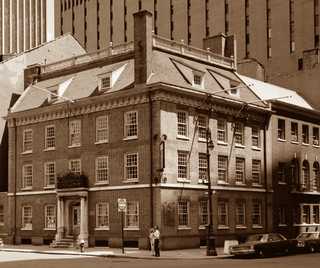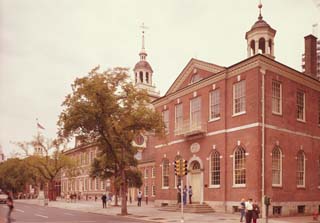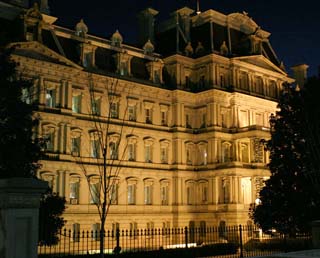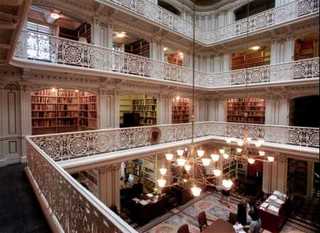 |
 |
 |
|
|
 |
 |
 |
The Second Continental Congress created the Committee of Correspondence, renamed the Committee of Secret Correspondence, by a resolution of November 29, 1775. The Committee was led by Benjamin Franklin. On April 17, 1777, the Committee was renamed the Committee of Foreign Affairs. On January 10, 1781, Congress shifted matters of diplomacy to a new Department of Foreign Affairs. Under the Articles of Confederation 1781-1789, Congress met in the New York City Hall and John Jay was the Superintendent of Foreign Affairs 1784-1790. The location of the nation's capital changed from the State House in Philadelphia, PA, 1781-83, to Princeton, NJ, and Annapolis, MD, and Trenton, NJ, 1783-84, to New York City Hall 1784-1790. Jay's Foreign Affairs offices were located 1785-89 in the Fraunces Tavern.
After 1789, the Department of Foreign Affairs evolved into the State Department. "In July 1789, the First Congress under the new Constitution created the Department of Foreign Affairs and directed that its Secretary should have 'the custody and charge of all records, books, and papers' kept by the department of the same name under the old government." (quote from NARA) On July 24, Charles Thomson retired as Secretary of the Congress and his duties were assumed by Roger Alden, Deputy Secretary of Foreign Affairs. "On September 15, 1789, Congress passed 'An Act to provide for the safe keeping of the Acts, Records, and Seal of the United States, and for other purposes.' This law changed the name of the Department of Foreign Affairs to the Department of State because certain domestic duties were assigned to the agency." (quote from State) Thomas Jefferson began his service as the first Secretary of State in March of 1790. The department offices were located near Congress Hall in Philadelphia until 1800. During yellow fever epidemics the offices moved to Trenton, New Jersey.
In 1800 the federal government moved to the new Federal City on the banks of the Potomac River. The offices of the Department of State were first located in the old Treasury building east of the White House with the other government departments. In Sept. 1800 they moved into one of the "Seven Buildings" then standing at Nineteenth Street and Pennsylvania Avenue. In 1801 they moved to the old War Office Building on Seventeenth Street west of the White House until 1819.
From 1819 to 1866 the State Department was located in the Northeast Executive Building, on the site of what later became the Old State-War-Navy Building. The Patent Office separated and moved into a new building in 1841 (now the National Portrait Gallery) in Washington, DC, in the block bounded by F and G Streets, and 7th and 9th Streets.
From 1866 to 1875 the State Department was located temporarily in the District of Columbia Orphan Asylum while a massive new building was constructed near the White House starting in 1871. The State Department wing was finished in 1875, and the 55 employees of the Department moved to the new quarters.
From 1875 to 1947 the State Department was located in the Eisenhower Executive Office Building (Old State-War-Navy Building) at 17th St. and Pennsylvania Ave., NW. It was built of granite 1871-88 by A. B. Mullett, who used 900 Doric columns in the building. At the time of its completion, it was the largest office building in the world. The French Second Empire architectural style reflected the exuberance and optimism of the country in the late 1800s.
From 1947 to the present, the State Department has been located in the office building at 2201 C Street, NW, in Foggy Bottom, called the New War Building when built in 1943, then the New State Building when occupied by the State Department in 1947, then in 2000 renamed the Harry S Truman State Office Building. The original New State Building became the George Marshall Wing in 2001. "After World War I, the departments of State, War and Navy outgrew their offices in what is now the Eisenhower Executive Office Building. The War Department was the first of those agencies to get approval to move out. It had planned to put its headquarters in a 560,000-square-foot building constructed between 1939 and 1941 but decided instead to build the Pentagon, constructed in 16 months between 1941 and 1943. The State Department then moved into what was to have been the War building, which became known as "Old War" and later "Old State," before recently being renamed the Marshall Wing to honor Gen. George C. Marshall, a former secretary of state. Between 1958 and 1960, the State Department's headquarters was expanded by nearly 2 million square feet. The newer section wraps around the western and southern sides of the older structure. (quote from Business Journal 2003)
In 2007, The Marshall Wing will be renovated to create the Department of State Visitor Center and National Museum of American Diplomacy
Sources:
- History of the U. S. Department of State
- "Homes of the Department of State, 1774-1976: the buildings occupied by the Department of State and its predecessors," by Lee H. Burke; based on a ms. by Richard S. Patterson. Washington, DC: Historical Office, Bureau of Public Affairs, Dept. of State: U.S. G.P.O., 1977. 57 p. : ill. ; 28 cm. LRC Reading Room JK1626 .B87 1977
- Old Executive Office Building from National Register
- President's Emergency Operations Center from FAS
- "Renovated State Department 'world class' space," Washington Business Journal, September 12, 2003 - article
- Stately Homes: A Department on the Move," by Bill Palmer, State Magazine, April 2005 - article
- The Declaration of Independence Our National Treasure from NARA
- The Family at 1718 H Street